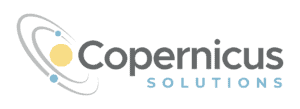Data-Driven Instruction
Driving Question: How can we use data to effectively tailor learning
experiences in ways that drive learning acceleration for all students?
WHY
We have to know where students are in order to figure out what they need to do next. A large body of research shows that students learn faster when we employ diagnostic and regular formative assessments to tailor instruction for students.
This section of the PAL will offer
- A brief overview of the research on why data-driven instruction is crucial for learning acceleration
- Curated tips for how to let assessment drive instruction
- Links to additional resources for your review
Let Data Drive Instruction
A large body of research shows that we will get better results by helping teachers learn how to use diagnostic assessments and learning progressions to move students rapidly toward grade level standards, deploy mastery learning strategies with rich tasks and opportunities for feedback and revision, use differentiated small group instruction and learning centers that are highly targeted as a key tool, and help schools create structured interventions like tutoring alongside classroom teaching. This learning acceleration model begins with highly effective teacher who know enough about how their students learn and where they are on their learning journey to create differentiated and targeted instructional plans for their students. When most people think of assessment, they immediately are drawn to summative or more formal assessments. However, for the purposes of learning acceleration, the most powerful assessment data is that which teachers can gather through formative assessments and learning activities that are directly tied to a teacher’s instructional goals and can be collected daily (Read more about the power of classroom-level data here).
According to NWEA, “Formative assessment is a planned, ongoing process used by all students and teachers during learning and teaching to elicit and use evidence of student learning to improve student understanding of intended disciplinary learning outcomes and support students to become self-directed learners.”
Not only does this formative data provide teachers with information about what students know/learned, it also provides important information about how students are learning. Both of these data points are highly educative for both the teacher and the student. When students are owners of their own data, they can be partners in their own learning journey which builds stamina, confidence, and willingness to persist.
Curated Tips for Data-Driven Instruction
- Know what kids know. Uncovering and addressing learning needs will require teachers to know what students know and can do throughout the school year. This means assessing their knowledge and skills daily or weekly, not just on unit or quarterly benchmarks or standardized assessments.
- Assess what students need as whole people. Assess what students need socially and emotionally as well as academically, address trauma with healing and support, and identify the next steps they are ready to take in their learning rather than labeling them. For more, you can also consult CCEE’s Field Guide for Accelerating Learning, Equity and Well-Being.
- Let assessment guide your planning. Use the standards continuums in the California Mathematics Framework and the California Common Core State Standards for English to assess where students are on their learning journeys and to plan instruction that will take students from where they are to where they need to be. Even if students are missing knowledge or skills from a previous grade, a focus on the content connections, big ideas, and cross-cutting themes mean students can continue to develop their knowledge while working on grade-appropriate standards.
- Focus on formative assessment. Ensure frequent formative assessments are included in daily lesson plans and drive instructional planning. Entrance and exit tickets, 1-to-1 conferences, written and oral explanations, reading fluency checks, quizzes, classwork, homework, and digital tools (such as polling or assessments embedded in tools like PearDeck or NearPod) all can provide plenty of information for teachers to determine student’s current levels of performance and make data-driven instructional decisions if they are carefully aligned with instructional goals. Recommendations for these practices should be informed by high-quality instructional materials. In California, CDE offers guidance on diagnostic assessments as well as Smarter Balance’s Interim Assessments. Other resources for formative assessments aligned to big ideas in the disciplines include NWEA, MAP, and iReady. Want to learn more about formative assessment? Check out these three micro-courses created by CCEE and the Center for Assessment.
- Be flexible. Use assessment to determine flexible groupings for just-in-time interventions to prepare all students for daily grade-level instruction (see the Individualized Instruction section for more on this) . These assessments should reveal what students already understand and what further connections might be necessary for them to fully access grade-level content. These assessments should not lead to the labeling and sorting of children, which often leads to segregation, marginalization, or privileging in ways strongly correlated with race, language, class, and ability status.
- Be strategic with remediation. If students need extra support, remediation should be brief and embedded within grade-level instruction as much as possible. Small-group instruction, high-quality tutoring, and other strategic and targeted supports are recommended when needed to develop appropriate background knowledge or skills. Avoid removing students from general grade-level instruction or tracking students when at all possible, as this leads to further inequity. (See the Individualized Instruction section for more on this)
Additional Resources
- CCEE: The Components of a Balanced Assessment System
- CCEE: Assessment for Learning in Extraordinary Times, a three-part series intended to help participants learn how to blend different formative assessment moves to make better instructional decisions
- CCEE: Insta-Data: Real-Time Formative Assessment that Works
- Learning as We Go: Principles for Effective Assessment during the COVID-19 Pandemic by CRPE
FEATURED RESOURCES:
- CDE: Guidance on Diagnostic and Formative Assessments
- CCEE and Center for Assessment: Formative Assessment Micro-Courses
- NWEA E-Book: Making it work: How formative assessment can supercharge your practice



